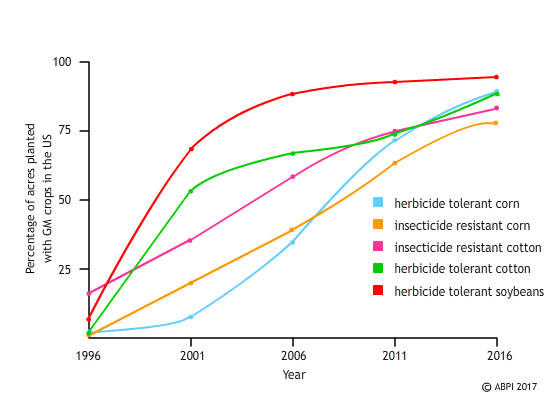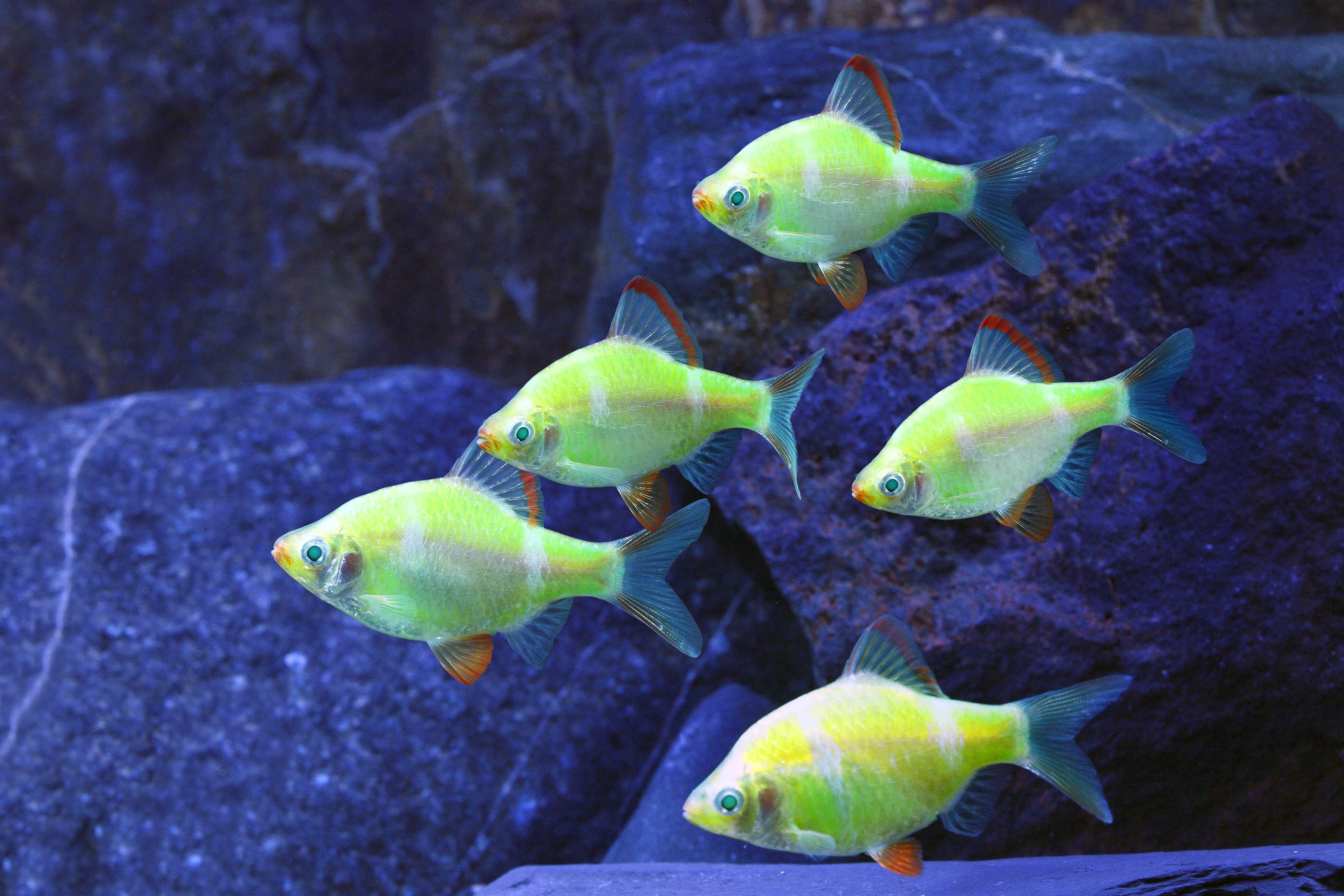This topic takes on average 55 minutes to read.
There are a number of interactive features in this resource:
 Biology
Biology
 PSHE / Citizenship studies
PSHE / Citizenship studies
 Science (applied)
Science (applied)
In 2015 the area of land planted with GM crops was estimated to be around 1,797,000 km2, and growing. A meta-analysis of the available data published in 2014 showed that GM planting had reduced pesticide use by 37%, increased yields by 22% and increased profits by 68%. The US is the largest producer of genetically engineered crops, but other countries are catching up fast.
Precautions are in place to ensure that GM crops do not have a negative environmental impact. Crop plants are able to breed and swap genes with other plants, and genetically engineered crops are no exception; many genetically engineered crops are deliberately made to be unfertile so this doesn’t occur. However, this does mean that farmers can’t store some seed to plant the next year and instead must buy new seed each year. Rice nearly always self-pollinates so there are few fears of Golden Rice cross-breeding (and weeds expressing high levels of beta-carotene are unlikely to seriously harm the environment).

The percentage of GM crops grown in the US has rocketed since 1996.

Maize has much potential as a GM crop producing much–needed human medicines, but there are potential hazards as well.
Maize has been proposed as a potential organism to use in bio-pharming, but the risks are likely to outweigh the benefits – at least at the moment. Maize produces large amounts of easily purified protein, and the structure of the maize genome is well understood and easy to engineer. Unlike micro-organisms, plants can produce correctly-formed complex recombinant proteins, and unlike animals there is no risk of a serious disease being transmitted to patients. Pharmaceuticals produced in this way might also be cheaper and easier to produce (once the method is established) than making them in a factory: if more is needed of a particular medicine, it is much easier to plant some more seed than building a new factory to make it in.
However, maize pollen is light and so can travel long distances on the wind to fertilise normal maize, like those in the field pictured above, and other plants. Furthermore, maize is a staple food crop in several countries, so there would be serious problems affecting many people if genetically engineered maize did cross-pollinate ordinary maize to produce a damaging hybrid. One way to avoid this problem is to insert the desired gene into the chloroplasts of plant cells: the gene would be present in many copies in the cell (as there are up to 100 chloroplasts in a leaf cell), but would not be transmitted to the seed.
As well as plants, the US is also the only country so far to allow the sale of genetically engineered pets to the public. GloFish are tropical fish that contain a gene which makes them fluorescent. If they did escape from a home aquarium, they would not survive in the wild: they are tropical fish and can only survive in warm freshwaters. Any predator that eats a GloFish is not harmed – the fluorescence causes no problems.
In any case, every consumer has enzymes called DNAases which break down the DNA of the organisms they eat. The DNAase would break down the genes for fluorescence in exactly the same way as they would break down the rest of the DNA. Most of us have eaten chicken or potatoes in our lives – but we haven’t turned into either organism as a result of the DNA we have taken in! Although these GloFish can be seen as frivolous, they have less potential environmental impact than other genetically engineered fish: salmon which have been genetically engineered to grow twice as fast as normal fish have been approved in Canada and the US. There are fears that they might escape from fish farms, and breed with the wild salmon populations. In fact, the GM salmon are made sterile so they cannot reproduce, and they are reared in special tanks on the land so even if they did escape it would be onto dry land, not into a river. The GM salmon is due to go on sale in the near future. It will be a trail-blazer, and the safety of the process and the acceptance by the buying public will be watched with interest around the world.

Green fluorescent genetically engineered fish.